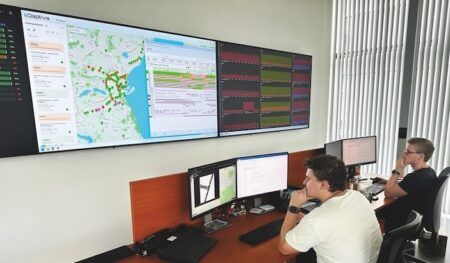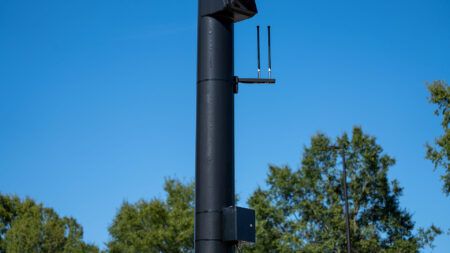Australian company Cohda Wireless has conducted a world-first self-driving vehicle demonstration in the Adelaide CBD (central business district) that shows the potential for connected and autonomous vehicle (CAV) technology to make city streets much safer.
Supported by the South Australia Department of Planning, Transport and Infrastructure’s Future Mobility Lab Fund, the Cohda demonstration revealed how smart connected vehicles can detect and respond to risky situations more effectively than a human could.
In June this year, the company took ownership of two specially-modified vehicles from the USA which it is using in advanced trials of its world-leading V2X (vehicle-to-everything) technology.
The two Lincoln MKZ sedans were fitted with an array of equipment to enable them to drive autonomously as well as Cohda’s software and onboard units (OBUs) to enable them to communicate both with each other, and roadside transport infrastructure such as traffic lights.
In an area covering two city blocks on Flinders Street just east of Victoria Square, the demonstration replicated a scenario that is probably a daily occurrence on city streets: Two vehicles approach a four-way intersection at right angles to each other. Car 2, driven by a human, fails to adhere to the red-light signal and approaches the intersection at speed, intending to ‘skip’ the red light. Car 1, a connected autonomous vehicle, is approaching the intersection from another direction and intends to proceed through the intersection on the green light.
In a real-life scenario, there would be a risk of a collision as human drivers will invariably approach the intersection when the light is green, fully confident that all other road users will obey the traffic signals. In an instance where Car 2 disobeyed the traffic signal and Car 1 was unable to see the approaching danger, due to visibility being obstructed by buildings or other infrastructure, a collision would be especially likely. However, if the vehicles are connected using V2X technology, a potential collision situation is detected and avoided well in advance of it actually happening.
“We demonstrated that when vehicles are connected to each other using our smart V2X technology, Car 1, the connected autonomous vehicle, would detect that Car 2 is approaching the red light at speed and is probably not going to stop. This allows the connected autonomous vehicle to pre-emptively identify and respond to the threat by slowing down and stopping,” explained Professor Paul Alexander, Cohda’s chief technical officer.
“The technology provides the vehicle with an awareness of its environment and risk factors associated with it, consistently and accurately up to 10 times per second, enabling it to make decisions that a human being would not be capable of making as the driver of the vehicle.”
Alexander noted, “Our goal today was not only to demonstrate the efficacy of our technology in enabling vehicles to communicate with each other, but also to do so in a city environment where so-called ‘urban canyons’ significantly affect the ability of systems reliant on global navigation satellite systems (GNSS) to achieve accurate positioning.
“Flinders Street is one such urban canyon where positioning through GNSS can be off by up to 40m, but with our V2X-Locate technology, positioning accuracy is improved to within a meter.”




